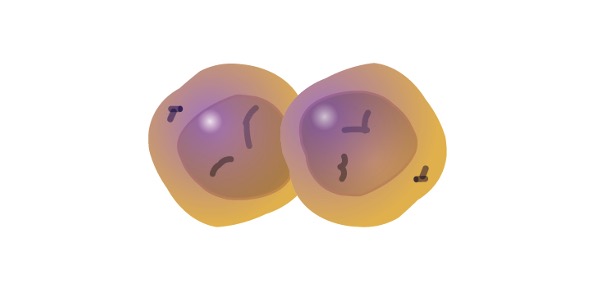Table of Contents
Urinary Bladder Definition
The urinary bladder is an organ that may be found in the urinary systems of a variety of animals. It holds urine generated and supplied by the kidneys through two ureters prior to urination. The human urinary bladder is hollow and muscular, with a capacity of four cups.
What is Urinary Bladder?
A wide fundus, body, apex, and neck make up the bladder’s structural makeup. Each of the three holes in the human bladder is covered by a mucosal flap that prevents urine from leaking backward into the ureters. Men and women have different anatomical positions for their bladders.
The urinary bladder is placed in front of the rectum in men, whereas it is located in front of the uterus in women. Due to folds called rugae that cover the interior walls, the bladder wall is very elastic, extending from roughly 5 mm to less than 3 mm.
Because the bladder can store a large volume of urine, the kidneys can continue to filter the blood even when an organism is unable to urinate. The bladder, for example, must retain more pee when sleeping. This permits an organism to relax without having to go to the bathroom.
Urinary Bladder Function
The urinary bladder’s job is to collect and retain urine from the kidneys until it can be passed through the body through urination. The normal human bladder can hold between 300 and 500 mL of pee. Due to the flattening of the rugae folds, the urine bladder is very elastic and can accept an increased amount of liquid, as mentioned above. Urination is regulated by the pontine micturition region in the brain, not the bladder.
Urinary Bladder Disorders
The urinary bladder can be affected by a variety of conditions. Bladder illnesses are characterised by frequent urination, discomfort, inadequate emptying, and irritation. The urinary bladder might also be affected by illnesses of other tissues or organs on occasion. An enlarged prostate, for example, might induce frequent urination. The following are some of the most prevalent urinary bladder pathologies:
Bladder Cancer: The most prevalent kind of bladder cancer affects the bladder’s epithelial lining. In fact, carcinomas account for around 90% of all bladder cancers. The most prevalent causes of bladder cancer include the use of certain medicines, cigarette smoke exposure, and infections.
Urinary Tract Infections: Urinary tract infections (UTIs) are a common occurrence that can be serious and constitute a significant public health risk. Bacterial infections in the bladder produce these infections, which are often caused by germs moving up the urethra and into the bladder. UTIs may be quite deadly if left untreated, as the infection can spread from the bladder to the kidneys. A burning sensation during urination, murky and/or foul-smelling urine, and a frequent need to pee despite little urine being produced are all common symptoms.
Bladder Stones: Bladder stones are hard deposits made up of minerals that form in the bladder as a result of dehydration and the presence of highly concentrated urine in the bladder. Stones come in a variety of sizes and are usually painless. Pain, blood in the urine, and itching are all common symptoms. Bladder stones are generally detected via X-rays, ultrasonography, and CT scans.
Neurogenic Bladder: Neurogenic bladder is a form of mental illness that affects a person’s capacity to pee. Urinating is usually assisted using a catheter since the peripheral nerves involved in urination are impaired. To empty their bladder, patients frequently need to utilise intermittent catheterization many times a day.
Bladder Exstrophy: Bladder exstrophy is a congenital condition characterised by the bladder protruding through the abdominal wall. This is a very unusual disease that is frequently accompanied with aberrant development of the pelvic floor and other muscles, as well as the genitals, particularly in women.
Bladder Sphincter Dyssynergia: Bladder sphincter dyssynergia is a disorder in which the urethral sphincter is unable to relax in tandem with bladder contraction. A central nervous system injury or disease is the most common cause of this illness. Urine retention and a history of bladder infections are common in patients.
Paruresis: The inability to urinate owing to the presence or imagined presence of others is known as paruresis. A sympathetic nervous system reaction causes this condition by tightening the sphincters of the bladder in response to adrenaline, limiting urination. Psychological treatment is usually required to address this problem.
Trigonitis: Trigonitis is an inflammatory disease that affects the bladder’s trigone area. The trigone, in instance, is a smooth triangular-shaped area that indicates the desire to urinate in reaction to stretching. An inflammatory condition in this area might cause an urgent desire to pee, pelvic discomfort, and pain or trouble urinating. Trigonitis can be caused by a variety of things, although bladder infections are the most frequent.
Interstitial Cystitis: Interstitial cystitis is a bladder disease that causes persistent discomfort. While the exact aetiology of interstitial cystitis is uncertain, individuals have damage to the bladder’s epithelial lining. Patients with an urge to pee, frequent urination, and discomfort are common in patients. A negative urine culture is generally utilised to establish a diagnosis since the symptoms are quite similar to those of a urinary tract infection.
Urine Retention: Urinary retention is a condition in which a person’s bladder is unable to drain fully. Poor urination pressure, the sense of a full bladder, and straining to pee are all symptoms. This is a life-threatening situation since the bladder might burst if left untreated. Although there are a number of reasons, catheterization is frequently used, and surgery may be necessary in some situations.
Urinary Bladder Citations
- Imaging of urinary bladder injury: the role of CT cystography. Emerg Radiol . 2020 Feb;27(1):87-95.
- Spontaneous Activity and the Urinary Bladder. Adv Exp Med Biol . 2019;1124:121-147.
- Urinary bladder contraction and relaxation: physiology and pathophysiology. Physiol Rev . 2004 Jul;84(3):935-86.







